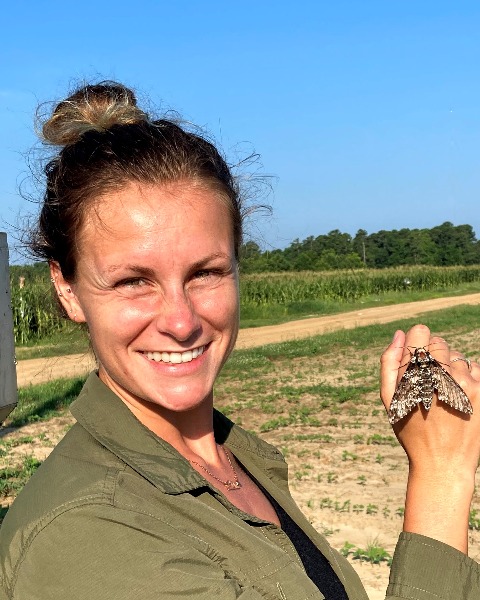Student 10-Minute Paper
Physiology, Biochemistry, and Toxicology
Student Competition
Student
Heat waves and immune priming improve survival of wild Manduca sexta to Bacillus thuringiensis (Bt) bacterial infection

Katherine Malinski
Graduate Student
University of North Carolina
Chapel Hill, North Carolina- CW
Christopher Willett
University of North Carolina
Chapel Hill, North Carolina - JK
Joel Kingsolver (he/him/his)
Professor
University of North Carolina
Chapel Hill, North Carolina
Presenting Author(s)
Co-Author(s)
Exposure to a low dose of a pathogen can increase survival to a later, more virulent dose in a phenomenon known as insect immune priming (or immune memory). Exposure to heat can also alter insect immune responses. Whether immune priming is impacted by heat waves has not been previously investigated. Here we examine the impact of a heat wave during a low dose initial exposure event on the strength of immune priming protection in an important crop pest, the tobacco hornworm (Manduca sexta). We used the highly virulent and agriculturally-relevant bacteria, Bacillus thuringiensis, which produces the commonly-used biopesticide Bt. We tested wild and domesticated populations of M. sexta to explore the impact of recent evolutionary history and selective pressures for immune and heat responses. The impact of priming was population-specific: in the lab population, immune priming with B. thuringiensis decreased survival to a later infection at both temperatures tested despite clearing the initial infection. In the field population, there was an interactive effect of priming and temperature: priming increased survival of a subsequent infection at the high temperature relative to the sham-challenged group, but decreased survival under the control temperature. These results demonstrate that the outcomes of host-pathogen interactions are dependent on ecological and environmental context, and can change with prior exposures to temperature or infection. We also highlight the importance of considering host population or strain in the interpretation of ecoimmunology studies when comparing or translating results to other populations/strains.

.png)

